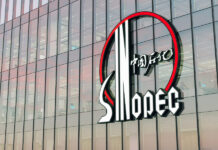A captive structure, or a variable interest entity (VIE) structure, is a method of compromise used by foreign investors for their investment in certain domestic industries in China. The reasons behind its adoption include restrictions on foreign investment in certain industries in China, as well as the relatively high threshold for entry into the domestic capital market, which has caused start-ups operating in China to turn to foreign investment and listings on overseas capital markets.
In recent years, with the progressive opening of relevant industries to foreign investment, the state’s vigorous support of start-ups, and the development of the domestic capital market, numerous enterprises that previously obtained foreign financing through a VIE have completed, or are contemplating, the dismantling of their existing structures in order to return to the Chinese market for financing or listing. This article describes the fundamental steps to take to accomplish such a restructuring.
VIE structure
Common practice for setting up a VIE involves the following:
- The founders establish offshore holding companies (usually BVI companies);
- The offshore holding companies establish another offshore company (usually a Cayman Islands company) to serve as the entity for purposes of financing, establishing employee stock ownership plans (ESOPs), and seeking public listing in the future;
- The Cayman company establishes a wholly-owned Hong Kong company out of tax planning considerations, which in turn establishes a wholly foreign-owned enterprise (WFOE) in China;
- The WFOE, the domestic company in China (usually the company that actually operates the business, i.e. the VIE company) and its registered shareholders execute a series of control agreements (VIE agreements, or control documents).
Under such a structure, the Cayman company can realize consolidated financial statements under generally accepted accounting principles in foreign jurisdictions for public listing purposes.
Prior to restructuring
The essence of dismantling a VIE is to take the Cayman company’s equity structure and move it horizontally to the domestic company. Before restructuring, it should be determined whether the relevant business is in a sector where foreign investment is restricted, if not prohibited. It needs to be taken into consideration whether a foreign-invested enterprise conducting the operations will affect the enterprise’s holding of relevant licences and qualifications, or materially affect its business.

The enterprise may also find it necessary to secure a certain amount of operating capital to complete the restructuring. This may then involve a plan for a new round of domestic financing, a plan for future integration of the relevant businesses, and preliminary contact with the domestic capital market.
Methods for dismantling
There are two basic methods to dismantle a VIE: (1) if foreign investment is restricted or prohibited in an industry, it is necessary to divest the foreign investor so that a domestic company will serve as the listing entity after the restructuring; or (2) in an industry where foreign investment is permitted or has been relaxed, the listing of a foreign-invested enterprise may be achieved after restructuring. In the first scenario, the key commercial issue is to reach an agreement on the pricing for the divestment of foreign shareholders. At the operational level, the rest is essentially the same as the second scenario, so the authors will focus on the second scenario.
Plan A: Domestic company serves as the surviving entity after restructuring. This involves mirroring the foreign shareholders’ interest in the Cayman company to the domestic company. The basic steps include: (1) terminating the control documents; (2) injecting the equity interest of the ESOP portion into the domestic company through share transfer or capital increase; (3) the foreign investors contribute to an increase in the capital of the domestic company; (4) the domestic company acquires 100% equity interest of the WFOE; and (5) cancelling the founders’ registration under circular 37 of the State Administration of Foreign Exchange, and deregistering the other offshore companies.
In carrying out the above-mentioned steps, to mitigate legal risks the parties may first execute certain restructuring agreements to maintain the relevant terms of the offshore transaction documents at the domestic company level to the extent possible. Also, a domestic shareholding platform (usually a limited partnership) may be set up first to allow materialization of employees’ shareholding before the listing.
To inject and restore the investment amount and equity of the investors in the company, the investors may be required to move certain funds among companies. After the domestic company receives the contribution from investors to the capital increase, it will use the same to pay the Hong Kong company for the acquisition of the equity interest of the WFOE, and the Hong Kong company will transfer the amount to the Cayman company to repurchase the investors’ shares, achieving recovery of the funds.
When considering the acquisition of the WFOE, it is important to consider the amount of the funds to remain offshore. As the total amount of the offshore financing is usually greater than the registered capital of the WFOE, extra tax costs may arise.
Plan B: The WFOE serves as the surviving entity after restructuring. Under this approach, the domestic shareholders of the Cayman company will be absorbed into the WFOE. The basic steps are as follows: (1) performing the agreement on the acquisition of the domestic company, which is a part of the control documents, and terminating the other control documents; (2) the Cayman company repurchases all of the shares of the founders, and the founders’ equity interest will be reflected in the WFOE by way of equity transfer or capital increase; (3) the employees’ equity interest will be reflected in the WFOE through share transfer or capital increase; and (4) completing other procedures, such as cancelling the founders’ registration under circular 37.
In addition to the issues mentioned in Plan A, certain issues in Plan B call for particular attention. If cash consideration is to be paid to an individual shareholder, individual income tax may arise; if a transfer/repurchase without consideration is to be carried out, the appraisal and review by relevant authorities may be required. If an investor demands direct equity-holding in the WFOE, it will take longer to get approval, and tax costs may increase. A decision is also needed on whether to make the WFOE or domestic company carry on operations after taking into account business and tax planning.
Suite 4201, Building A, Fortune Plaza Office Tower
7 East 3rd Ring Middle Road
Chaoyang District, Beijing 100020 China
Tel: +86 10 6530 9989
Fax: +86 10 6530 9980
E-mail:
mzhou@pacgatelaw.com






















